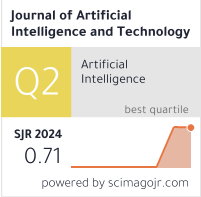Non-Assembly Walking Mechanism Utilizing a Hexapod Gait
DOI:
https://doi.org/10.37965/jait.2022.0112Keywords:
robot, 3D printing, walking, hexapodAbstract
Small inspection robots allow for the optimal exploration of environments and the collection of data from challenging areas, particularly where there may be small access points or tight and fragile surroundings. These robots can be custom-built for specific tasks, but the design and assembly process for this can be costly, both in resources and assembly time. The use of 3D printing to create Non-Assembly mechanisms can assist in saving time and resources by reducing the number of different components required and removing the necessity for complex assembly tasks. By iterating on previous work performed in the institute, this paper introduces a novel robot design to push the capabilities of Non-Assembly systems. By building on previous knowledge, this new walking robot improves on the previous iteration by creating a more robust and reliable system, more capable of effectively exploring challenging environments accurately, while still using practices designed to save on cost and production time. Benchmark tests were performed to provide an accurate comparison against the previous design and highlight the robots marked improvements in positional accuracy over its predecessor.
Metrics
Published
How to Cite
Issue
Section
License
Copyright (c) 2022 Authors

This work is licensed under a Creative Commons Attribution 4.0 International License.





